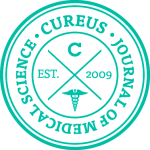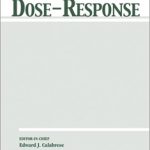Tumaini R. Coker. Linda S. Chan, Sydne J. Newberry, Mary Ann Limbos, Marika J. Suttorp, Paul G. Shekelle, Glenn S. Takata
Diagnosis, Microbial Epidemiology, and Antibiotic Treatment of Acute Otitis Media in Children
JAMA, 2010, 304 (19), 2161-2170

Context Acute otitis media (AOM) is the most common condition for which antibiotics are prescribed for US children; however, wide variation exists in diagnosis and treatment.Objectives To perform a systematic review on AOM diagnosis, treatment, and the association of heptavalent pneumococcal conjugate vaccine (PCV7) use with AOM microbiology.Data Sources PubMed, Cochrane Databases, and Web of Science, searched to identify articles published from January 1999 through July 2010.Study Selection Diagnostic studies with a criterion standard, observational studies and randomized controlled trials comparing AOM microbiology with and without PCV7, and randomized controlled trials assessing antibiotic treatment.Data Extraction Independent article review and study quality assessment by 2 investigators with consensus resolution of discrepancies.Results Of 8945 citations screened, 135 were included. Meta-analysis was performed for comparisons with 3 or more trials. Few studies examined diagnosis; otoscopic findings of tympanic membrane bulging (positive likelihood ratio, 51 [95% confidence interval {CI}, 36-73]) and redness (positive likelihood ratio, 8.4 [95% CI, 7-11]) were associated with accurate diagnosis. In the few available studies, prevalence of Streptococcus pneumoniae decreased (eg, 33%-48% vs 23%-31% of AOM isolates), while that of Haemophilus influenzae increased (41%-43% vs 56%-57%) pre- vs post-PCV7. Short-term clinical success was higher for immediate use of ampicillin or amoxicillin vs placebo (73% vs 60%; pooled rate difference, 12% [95% CI, 5%-18%]; number needed to treat, 9 [95% CI, 6-20]), while increasing the rate of rash or diarrhea by 3% to 5%. Two of 4 studies showed greater clinical success for immediate vs delayed antibiotics (95% vs 80%; rate difference, 15% [95% CI, 6%-24%] and 86% vs 70%; rate difference, 16% [95% CI, 6%-26%]). Data are absent on long-term effects on antimicrobial resistance. Meta-analyses in general showed no significant differences in antibiotic comparative effectiveness.Conclusions Otoscopic findings are critical to accurate AOM diagnosis. AOM microbiology has changed with use of PCV7. Antibiotics are modestly more effective than no treatment but cause adverse effects in 4% to 10% of children. Most antibiotics have comparable clinical success.







